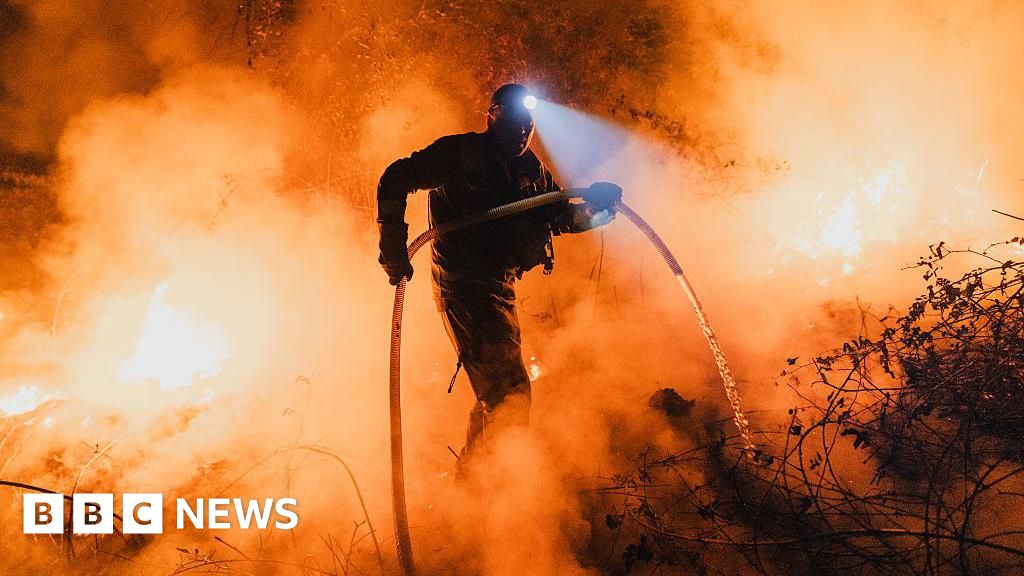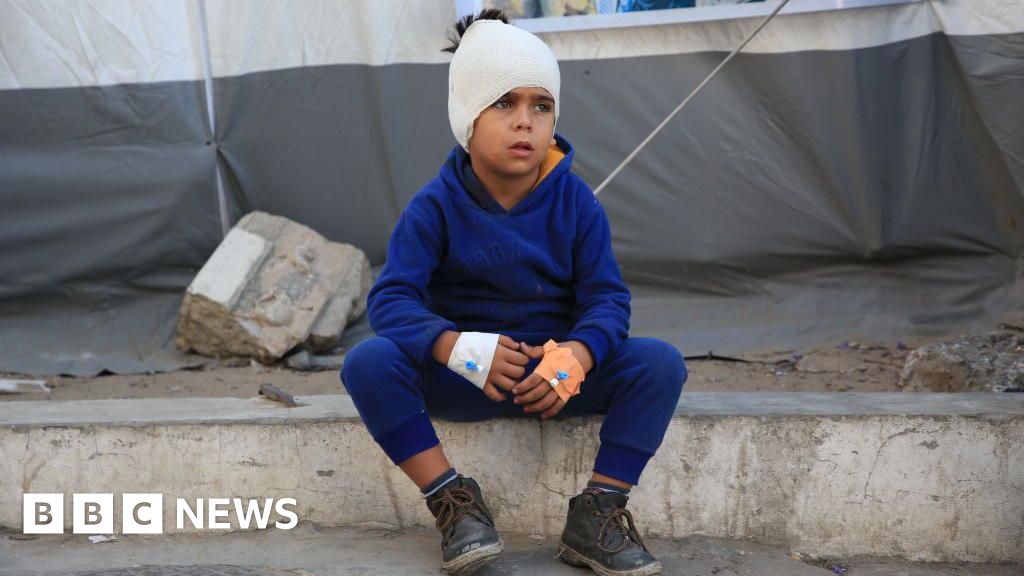The national health department is convinced that all US government funding for HIV and tuberculosis (TB) projects in South Africa will end by 30 September.
It has calculated that it needs R2.82 billion to plug the gap for the rest of the financial year after the Trump administration cut more than half of such support to the country in February.
The government's financial year runs from 1 April to 31 March.
"Without such replacement funds, we won't be able to sustain our HIV programme," warns the department's deputy director-general for the country's National Health Insurance (NHI) scheme, Nicholas Crisp.
But these funds have yet to be raised, and the stakes are high: between 150 000 and 295 000 new HIV infections – in addition to about 130 000 annual new HIV infections – over the next four years, according to a Wits modelling study commissioned by the department.
And up to a 38% increase in Aids-related deaths.
That's unless the Trump administration re-funds all stopped projects or the government takes over all the projects.
Crisp, who led the calculations, says the R2.82 billion is based on salary data of the 24 264 full-time and part-time employees of current and previously US-government-funded HIV and TB organisations.
The health department asked the President's Emergency Plan for Aids Relief (Pepfar), the US government fund that supported the projects, for the figures so they could work out how much money they would need to appoint formerly Pepfar-sponsored workers.
Why USAID projects left a gap
Pepfar supported South Africa's efforts to fight HIV and TB for the current US financial year – from 1 October 2024 to 30 September 2025 – to the tune of $439 537 828 (about R8.3 billion at the current exchange rate).
The money was sent to the country via either the United States Agency for International Aid (USAID) or the Centres for Disease Control and Prevention (CDC). Most of the funds went to non-profit organisations that helped the government to reach its HIV and TB goals.
Crisp says Pepfar data shows about 57% of funds spent on salaries and consulting fees were channelled through USAID and 43% via the CDC.
The staff complement of Pepfar-funded organisations came to 13 741 health workers (8 493 full-time; 5 248 part-time) funded via USAID and 10 523 (7 046 full-time; 3 477 part-time) whose salaries were paid via the CDC. Together, this makes up a total of 24 264 workers.
Most of the workers are data capturers (12.5%), lay counsellors (11.1%), professional nurses (9.6%), middle managers (6.4%) and youth workers (6.2%).
READ | 'Show trust in our continent': Motsoaledi blasts African leaders seeking treatment abroad
In total, there were 39 prime partners, who often received large chunks of money that were then subgranted to smaller organisations to carry out work on the ground, and 150 "implementing partners".
On 26 February, however, the Trump administration ended all Pepfar-funded projects in South Africa that got their money through USAID as part of a global foreign aid cut.
Bhekisisa has learnt that the few USAID projects in the country that didn't receive termination letters never received funds to continue their activities, and they have mostly also closed their programmes.
Crisp says the available data shows that of the total Pepfar budget for SA (so for all costs, not just salaries) for this financial year of R8.3 billion, around R4.45 billion was received via USAID.
On the other hand, projects funded through the CDC have been allowed to continue with their full budgets after a US federal court ordered the Trump administration to do so, but they only have funds until 30 September.
According to the US government, 21 CDC-funded organisations are still operating in South Africa with Pepfar funds. View the list of CDC organisations provided by the US government.
Will funding for SA continue after 30 September?
What happens after 30 September will depend on how the US Congress votes on the budget President Donald Trump submits, explains a former Pepfar staff head, Jirair Ratevosian.
Ratevosian, who is currently an associate research scientist at Yale University, says a process known as "passback", during which agencies and government departments, such as the state department under which USAID falls, advocate for budgets, started this week.
A leaked White House document, which The New York Times has seen and reported on this week, proposes that Pepfar continue to exist for the 2026 financial year in the US with a budget of $2.9 billion – but that it mainly focuses on HIV treatment and not prevention.
"That might seem like a substantial amount in isolation, but it represents a 40% reduction from the current budget," warns Ratevosian, "so if Congress votes to put through the Trump budget as is, more than half of programmes will undoubtedly be cut. And we don't yet know if rules for what can and what can't get funded will get even stricter."
President Trump also announced a 90-day review of foreign aid on 20 January, the day he was inaugurated. That review technically ends on Sunday, 20 April; the president would need to announce the way forward.
But many people are confused. Local CDC-funded organisations say they have no idea, and neither do their contracting officers from the US government, if the review is still ongoing.
Ratevosian, however, says he suspects there could be an announcement by Friday.
How did the health department come to R2.82 billion?
But Crisp says the health department is operating with the assumption that all Pepfar funds for South Africa will stop and that the government should take over the responsibility for every service that is and was being supported by America's Aids fund.
And even though the department and local Pepfar staff meet biweekly, there's nothing they can do to stop potential cuts. Sources say local Pepfar staff are mostly bypassed with decisions made in Washington, DC.
READ | Africa-CDC boss slams SA for snubbing local vaccines: 'It's a shame!'
The R2.82 billion that the health department says it needs would cover 12 months of most USAID workers' salaries and six months (1 October to 31 March) of CDC projects' salaries, if workers were to be phased into the public primary healthcare system. The amount comes to 63% of the actual salaries paid for by Pepfar as the health department has worked in savings, says Crisp.
"Because several different projects worked in the same districts, doing more or less the same work, there were many managers whose salaries made up a large proportion of salary costs in such districts," explains Crisp.
"So we modelled our calculations on cutting down on managers.
"Duplication, such as too many of the same type of workers, for instance, data capturers, in the same subdistricts, has also been addressed."
This has resulted in cost savings of 37%, which will translate to R1.632 billion.
Which provinces have been hit hardest?
Because of the ending of USAID projects, Pepfar now supports projects in less than half – 12 – of the 27 health districts with high HIV infection rates in which they used to. View the health districts in which Pepfar still funds projects.
The four provinces that have been hit the hardest because they had received almost all their Pepfar funding through USAID are: Limpopo (97.2%), Mpumalanga (93.5%), the Free State (87.3%) and the Western Cape (93.5%).
But Crisp warns that it would be unwise to incorporate all Pepfar-project staff into the public health sector straight away, as some programmes are successful because non-profits are sometimes trusted more than government by groups, such as transgender people, sex workers and injecting drug users, groups that have a higher chance of getting HIV.
The impact of cuts on the national health department
Crisp warns that Pepfar cuts have left the national health department "extremely vulnerable" because it has lost two-thirds of the staff who manage "key functions".
For years, the department has been working on digitising the public health information system.
One of its most important projects, on which the rollout of the NHI depends, is developing an "electronic medical record for each person, on which all that person's health data will be stored. The Council for Scientific and Industrial Research (CSIR) works with the health department on this and 82 of the 102 CSIR staff are funded through the CDC. The CDC also pays for hardware. The funding for digital health projects is R258 million for the current financial year, which could now potentially be stopped for the year thereafter," says Crisp.
The health department also gets R35 million from Pepfar to pay the salaries of 34 people and two logistics companies who manage and roll out a chronic medicine programme, known as CCMDD, for about 3.3 million people who collect their HIV and other medicine from pick-up points close to their homes.
"Without this programme, all of these people will collect their medicine from hospitals and clinics, which will create long waiting lines and frustrate patients to the extent that they will no longer go to collect their medicines," Crisp explains.
Lastly, the department gets R47.4 million to manage parts of the demand generation and analysis needed to manage the tenders for 1 300 medicines and other pharmaceutical products. The process of selecting medicines and monitoring suppliers and stock relies on a team employed by an NGO.
Where will the money come from – and what's the timeline?
The health department knows that funds to fill the Pepfar funding gap won't come from one source only, says Crisp.
"Not a single donor has R8 billion to give to us annually, and neither does the government."
He says, so far, the health department has received R1 billion of additional antiretroviral drugs (ARVs) from the Global Fund for HIV, TB and Malaria to treat people with HIV.
"That means the department can buy fewer ARVs themselves and then, instead, use the money to contract formerly Pepfar-funded NGOs to do some work, but tender processes will, unfortunately, complicate processes because tenders take so long to award."
The health department has proposed to the Treasury that it grants the department an exemption to allow it to contract all or some of the over 30 Pepfar prime partners to help run the country's HIV programme "through the transition to becoming self-sufficient".
Crisp says the idea is to create a simple service-level agreement that will be used by all partners and the Treasury to create a conditional grant or earmarked allocation for this purpose, which the department will manage.
He says the health department has spoken to the Treasury about "a budget over and above" its already allocated budget. But Crisp says the Treasury has not yet agreed to funding.
The fiscal position is very tight, so the Treasury is wanting extremely detailed plans for any additional funds. The problem is that the situation is very fluid, was centrally funded by Pepfar, and is likely to keep changing as the departments learn what is essential.
"Another plan the department, embassies, philanthropic foundations and businesses are working on is the establishment of a 'trust fund', similar to the Solidarity Fund during the Covid pandemic, to which many organisations contribute. The idea would be to have private funding available that can be used at short notice and without government bureaucracy to address emergencies," Crisp says.
So far, a working group has been created, which has met at least twice.
But currently, the department remains in a dilemma: it doesn't yet have a large financial commitment for the R2.8 billion it needs.
Crisp warns: "The risk is that without the additional funding to plug essential gaps, some services will be terminated or scaled down.
"If patients who are familiar with a particular programme are left guessing, they may abandon treatment and not move elsewhere. That would be bad because it makes them vulnerable and may create opportunities for drug resistance and for new HIV infections to increase again, working against all the progress we've made over the past two decades."
This story was produced by the Bhekisisa Centre for Health Journalism. Sign up for the newsletter.

 (1).png)
 4 months ago
81
4 months ago
81

















